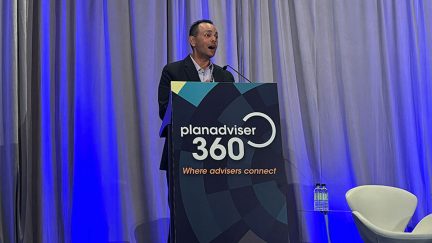Never miss a story — sign up for PLANADVISER newsletters to keep up on the latest retirement plan adviser news.
Employers Overwhelmingly Think 401(k) Plans Are Critical
The vast majority of workers (89%) view a 401(k) or similar plan as an important benefit, according to a new report from the Transamerica Center for Retirement Studies, “The Current State of 401(k)s: The Employer’s Perspective.” A similar percentage (84%) of employers believe their employees see such a benefit as important. Seventy-four percent of employers offer a 401(k) or similar plan to their employees. However, only 38% of employers with a 401(k) plan offer them to their part-time workers.
Automatic enrollment is not being embraced by a majority of employers. Only 41%
of large companies (those with 500 employees or more) offer automatic
enrollment, compared with just 28 percent of small companies (100 through 499 employees) and
18% of micro companies (10 through 99 employees). Automatic escalation is also
more prevalent at large companies, with 43% automatically increasing
participants’ contributions annually,
compared with 26% for both micro and small non-micro companies.
By comparison, 71% of employees would like to be auto-enrolled into
their plan, and 67% would like it to include auto-escalation. Thirty-seven
percent of workers expect savings from 401(k)s, 403(b)s and/or individual retirement accounts (IRAs) to be
their primary source of income when they retire.
Among companies that do not offer a 401(k) or similar plan, only 27% say they are likely to begin sponsoring a plan in the next two years. Among those not planning to do so, their most frequently cited reasons are: their company is too small (58%), concerns about cost (50%), lack of employee interest (32%), and lack of company or management interest (27%). However, 22% of those unlikely to offer a plan indicate they would consider joining a multiple employer plan (MEP) offered by a vendor that handles many of the fiduciary and administrative duties at a reasonable cost.
NEXT: How many companies offer a match?Smaller companies lag behind larger companies in offering matching contributions as part of their 401(k) or similar plan. Seventy-three percent of all plan sponsors offer a matching contribution, with 71% of micro companies and 77% of small companies doing so. Eighty-five percent of large companies offer a match.
Among workers who are offered a 401(k) or similar plan, the plan participation
rate is 80%. Micro company workers (83%) and large company workers (80%) are
more likely than small workers (73%) to participate. The median annual salary
deferral rate is 8% and is similar among workers of all company sizes.
Among workers who currently participate in a plan, 23% have taken some
form of loan and/or early withdrawal from a 401(k) or similar plan or IRA. Among those who have taken a loan from their 401(k)
or similar plan, the most frequently cited primary reasons were unplanned major
expenses (23%) and paying off debt (23%). To a lesser extent, purchase of a
vehicle (11%), home improvements (8%) and medical bills (8%) are cited as the
primary reason.
Among those who have taken a hardship withdrawal, 28% said their primary reason
was to pay for certain medical expenses. Another primary reason for
the withdrawal was payments to prevent eviction from primary residence (17%).
The third most frequently cited reason was payment of tuition and related
educational fees for the next 12 months of post-secondary education (14%).
As of 2015, the estimated median household retirement savings was $63,000; however,
it was higher among large-company workers ($79,000) than among micro-company
workers ($51,000) and small non-micro-company workers ($48,000). Among age 50-plus
workers, the estimated median household savings was $135,000; however, it was
higher among age 50-plus workers in large companies ($142,000) than those in
micro-companies ($119,000).
Transamerica Center for Retirement Studies based its findings on a Harris Poll of 1,022 employers conducted last fall and a Harris Poll of 4,550 workers early last year. The full report can be downloaded here.
You Might Also Like:

How to Establish Better Decumulation Options for Future DC Plans

US Retirement Market Evolves Amid Growth, Challenges
